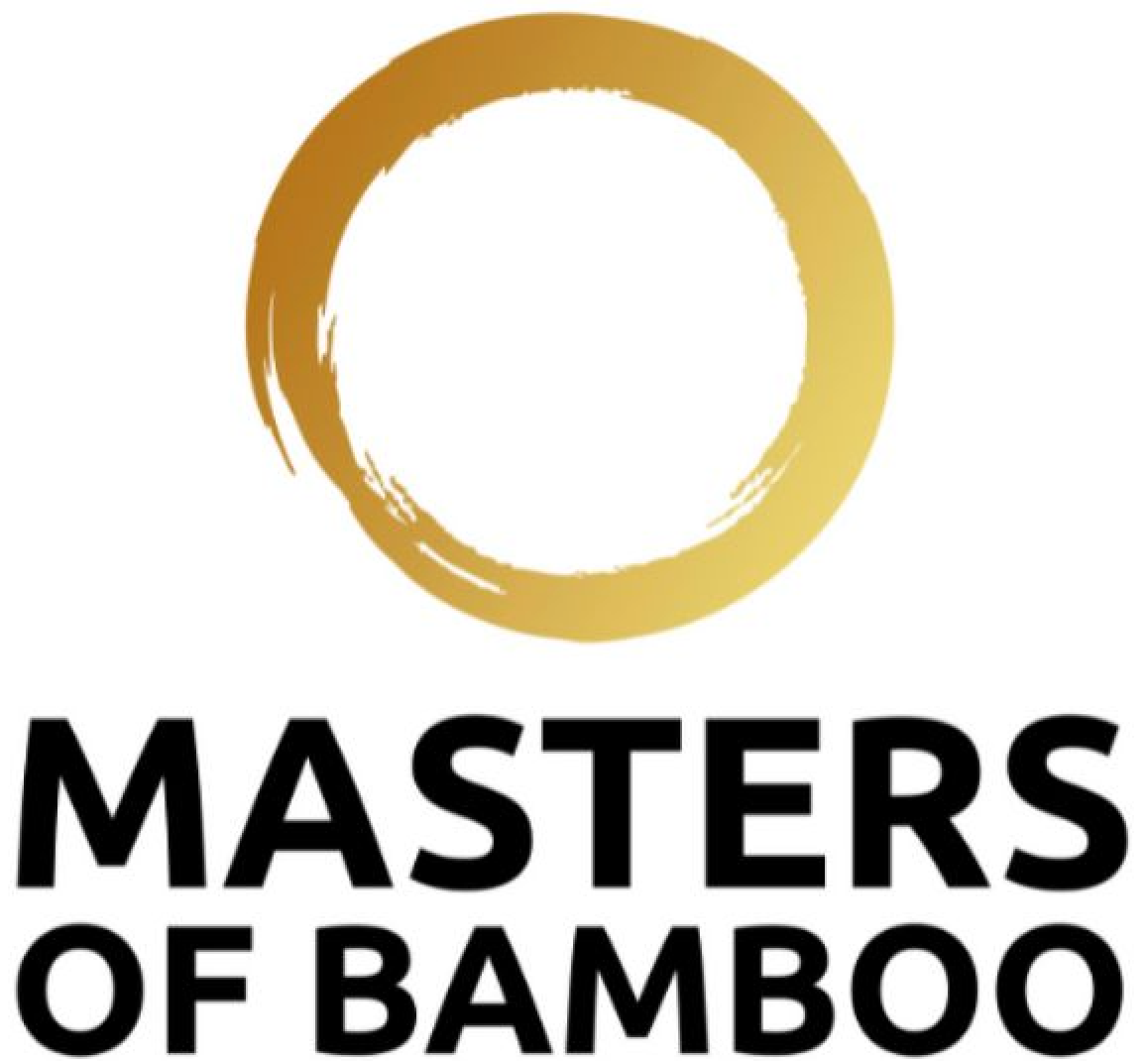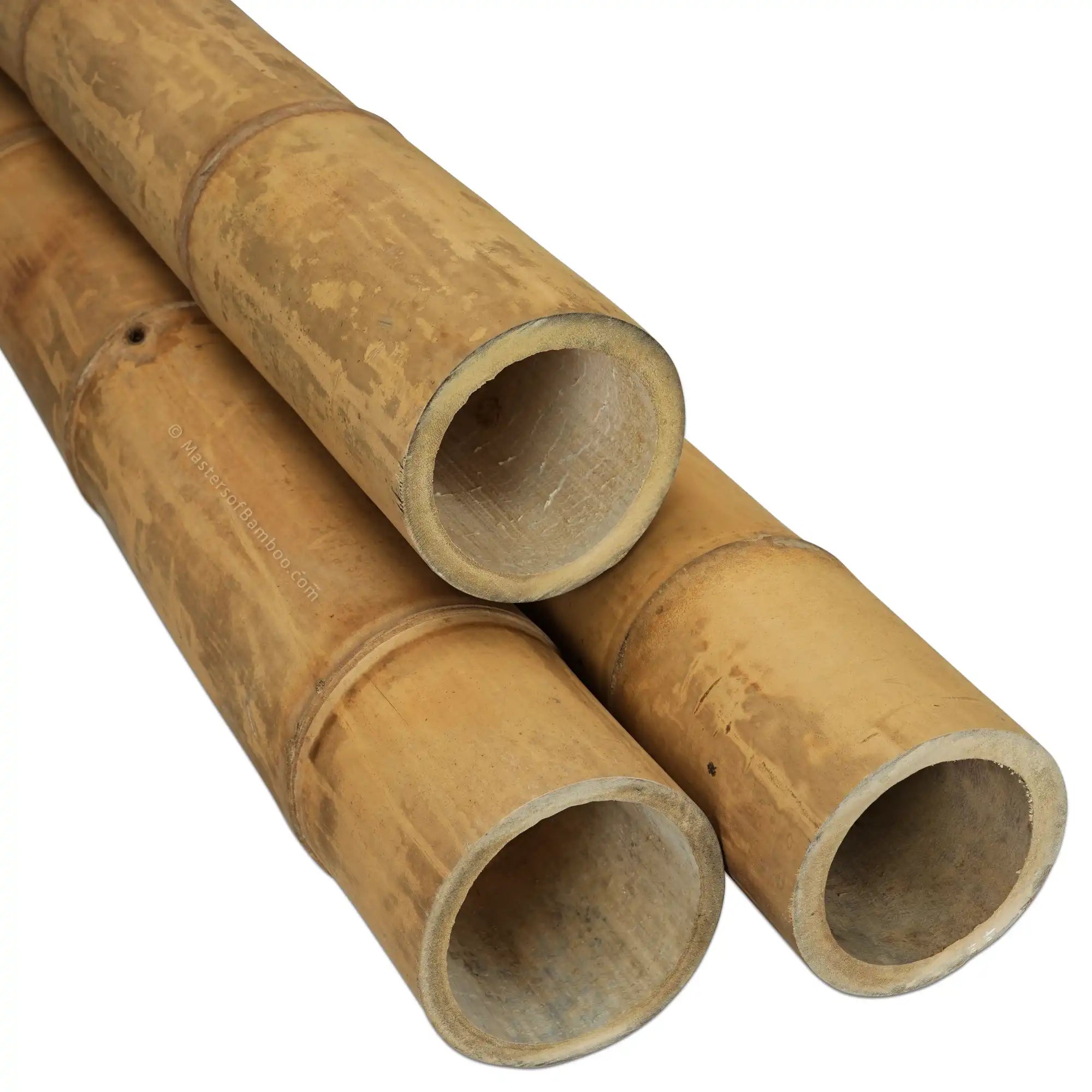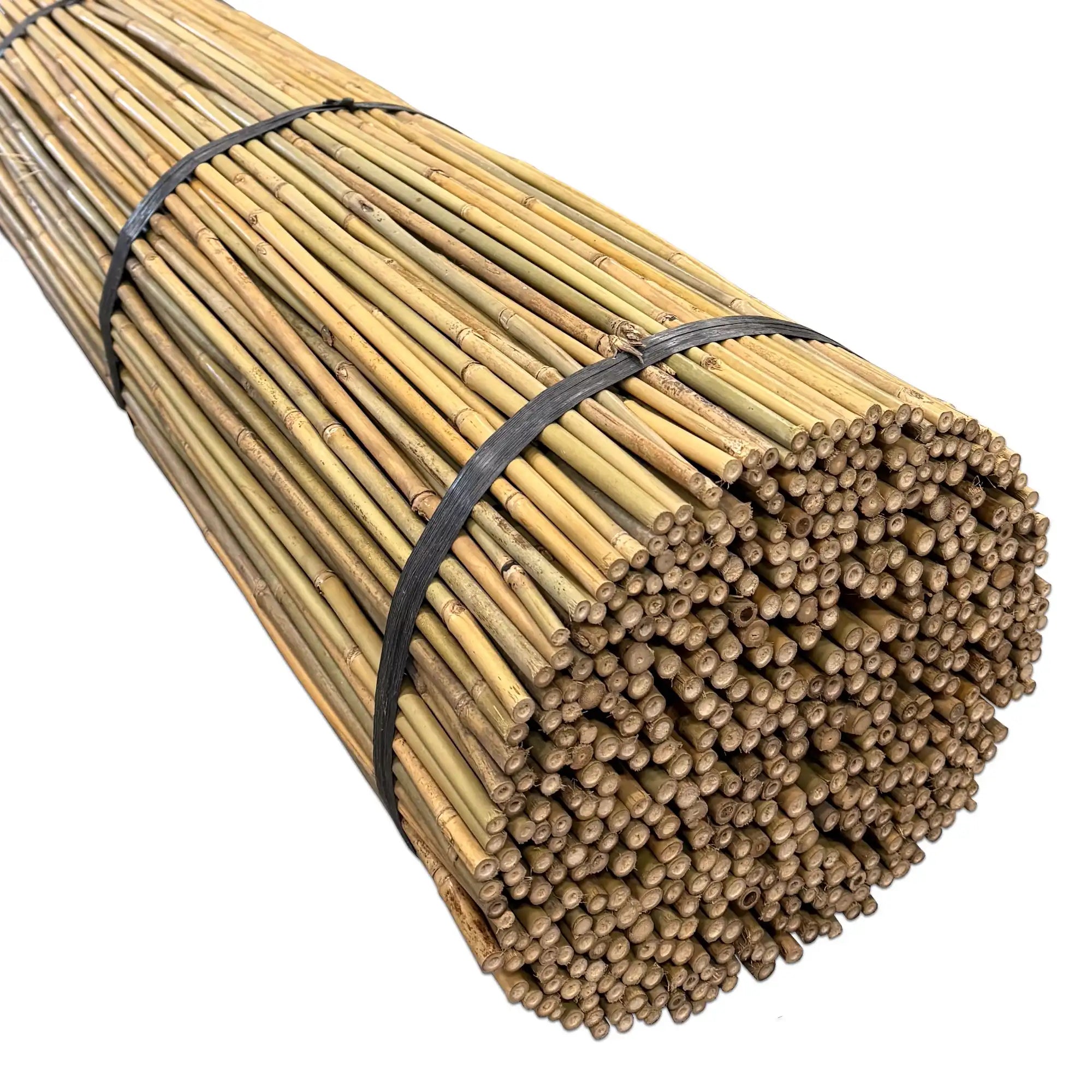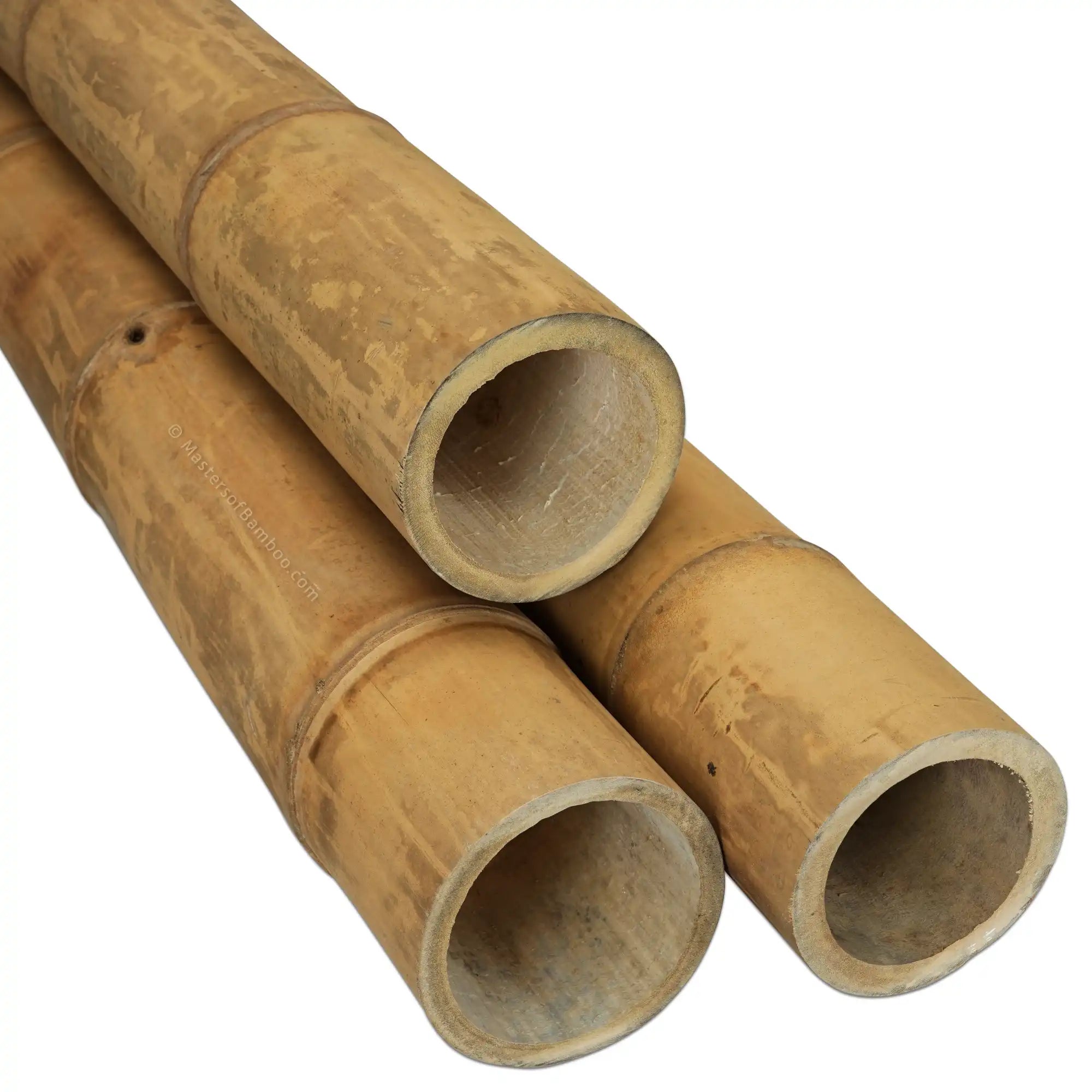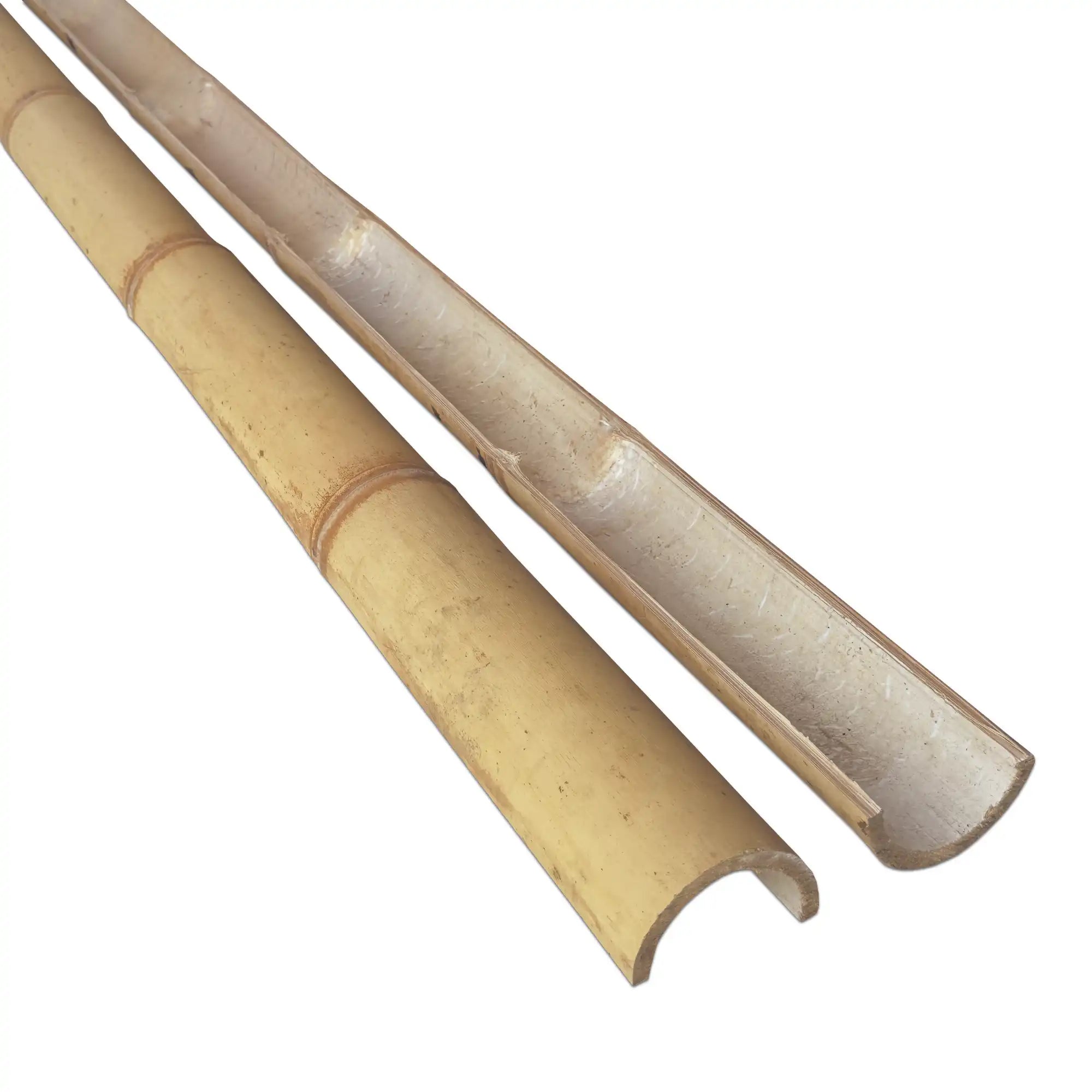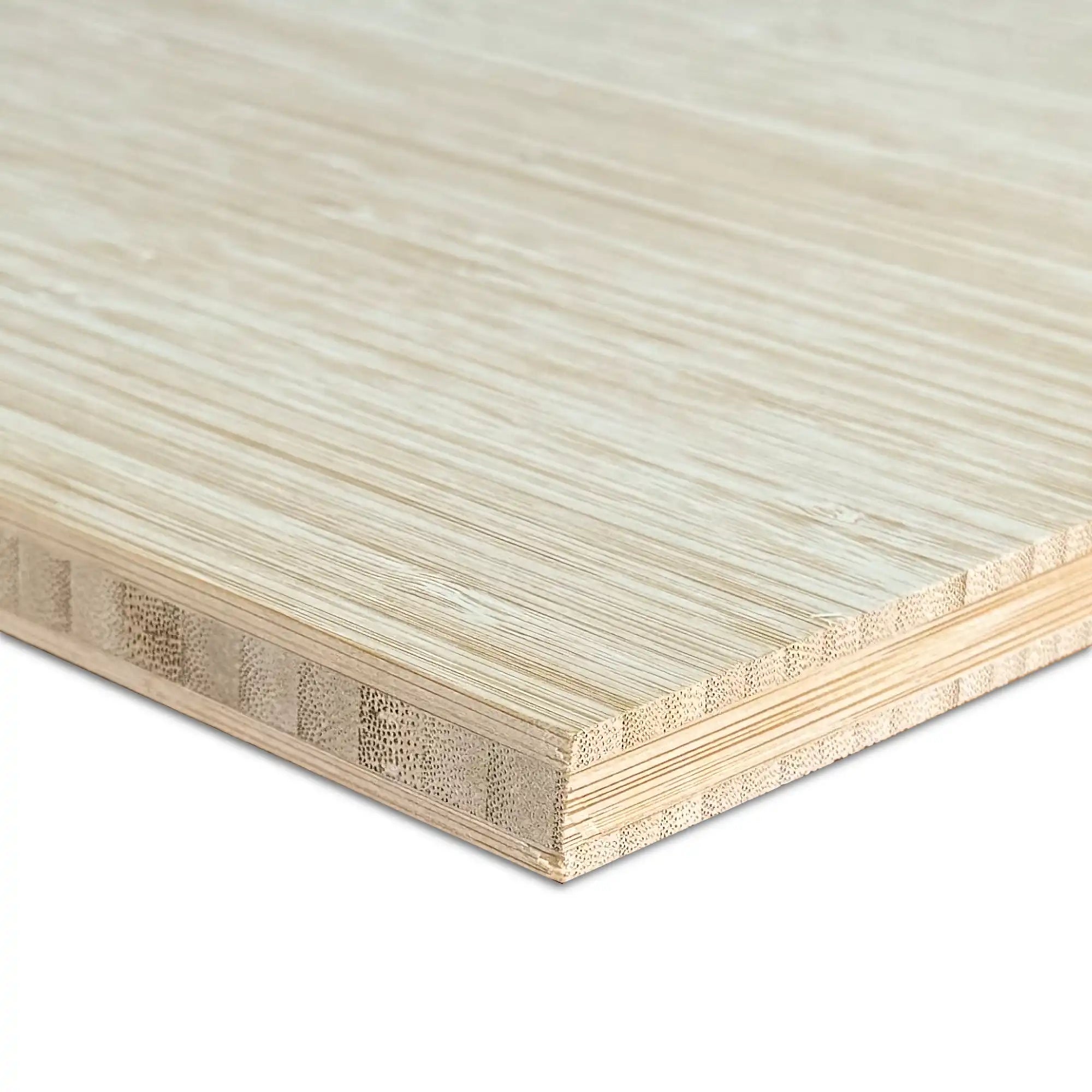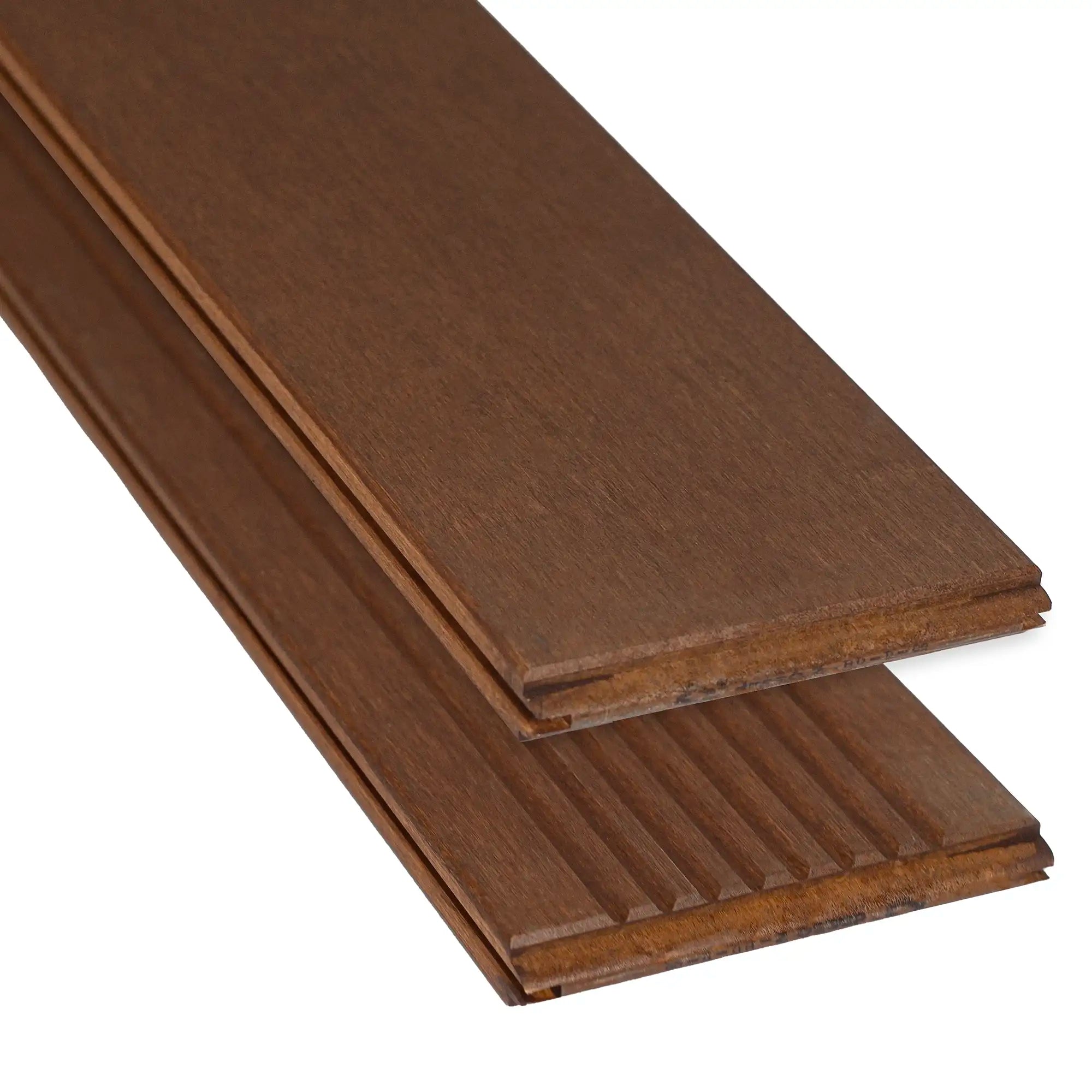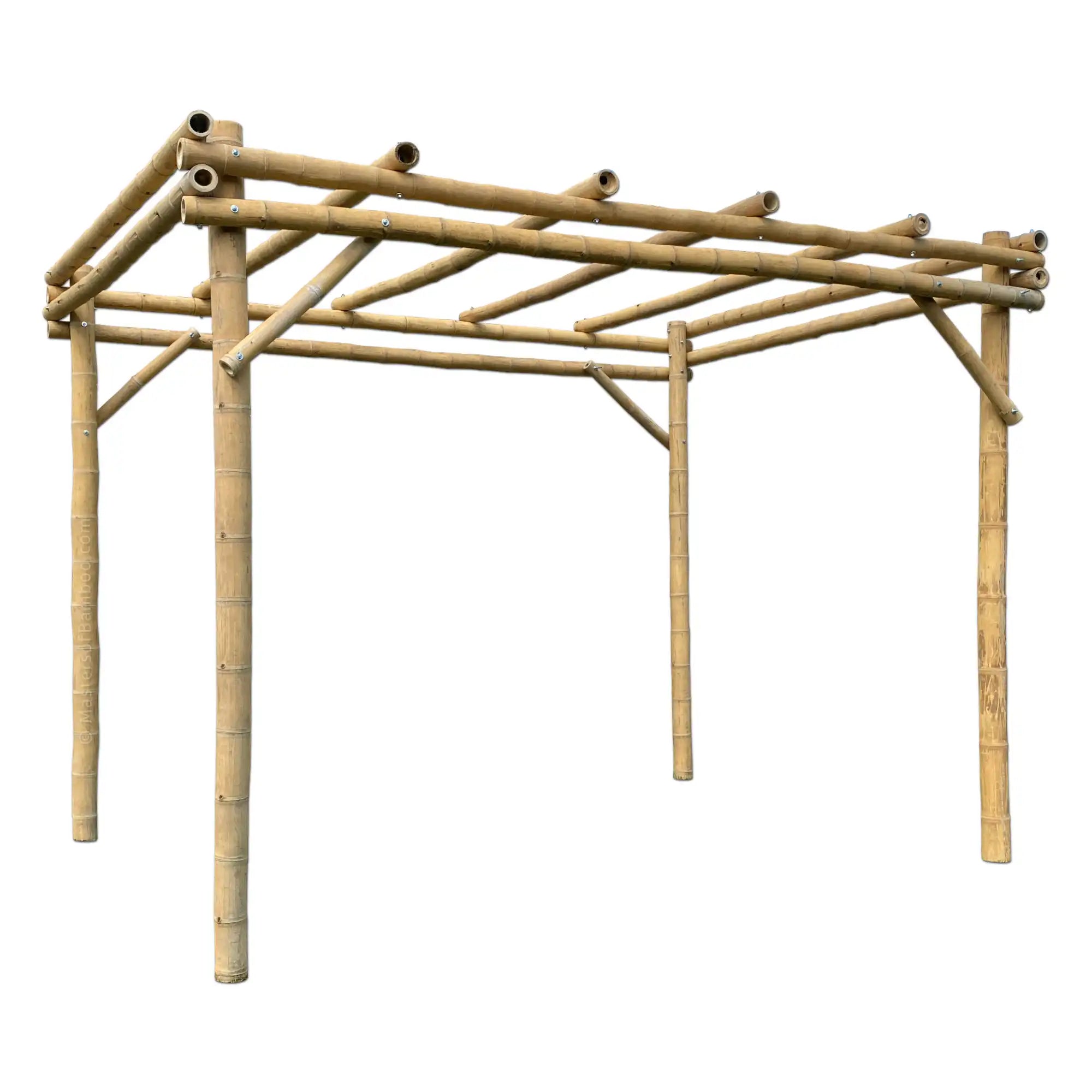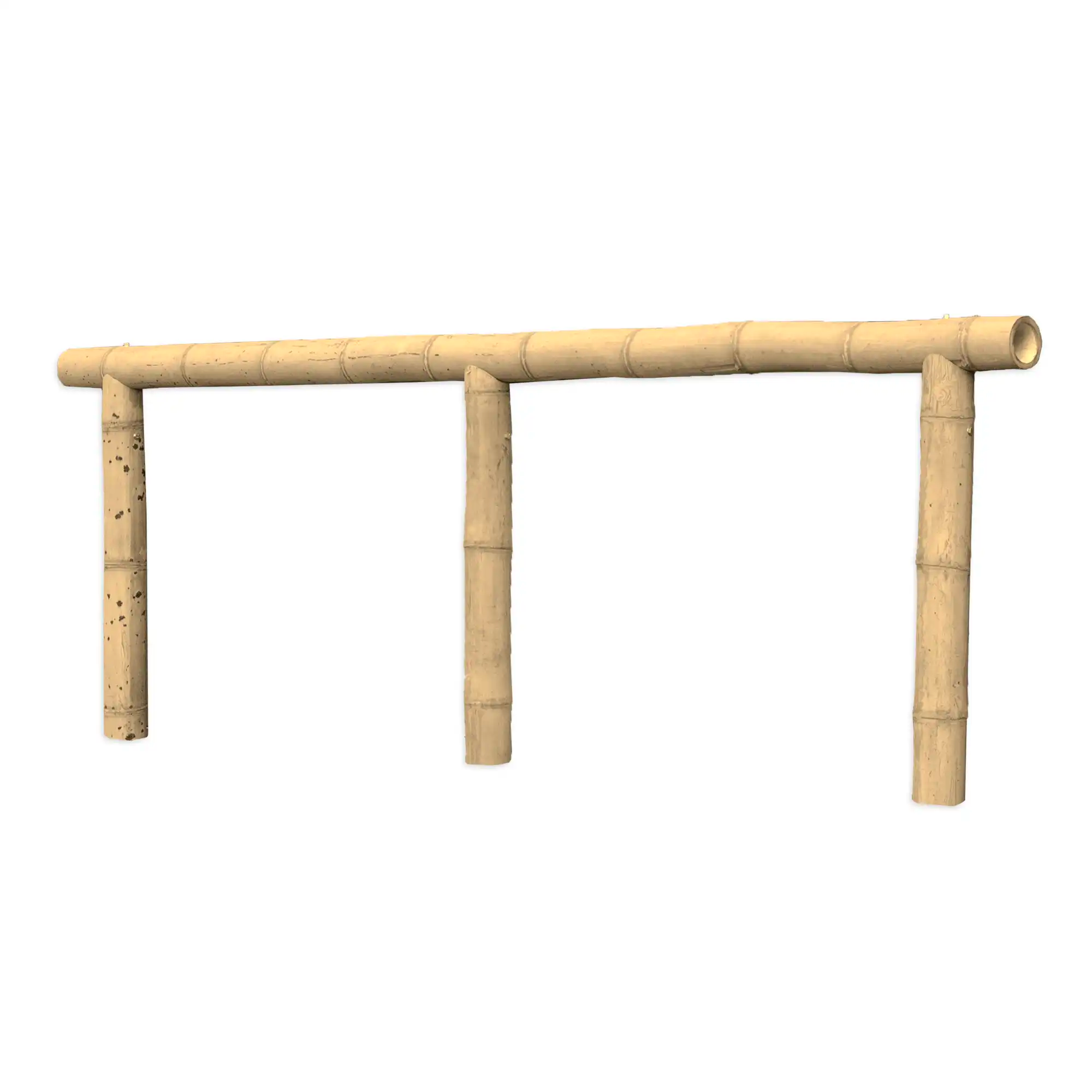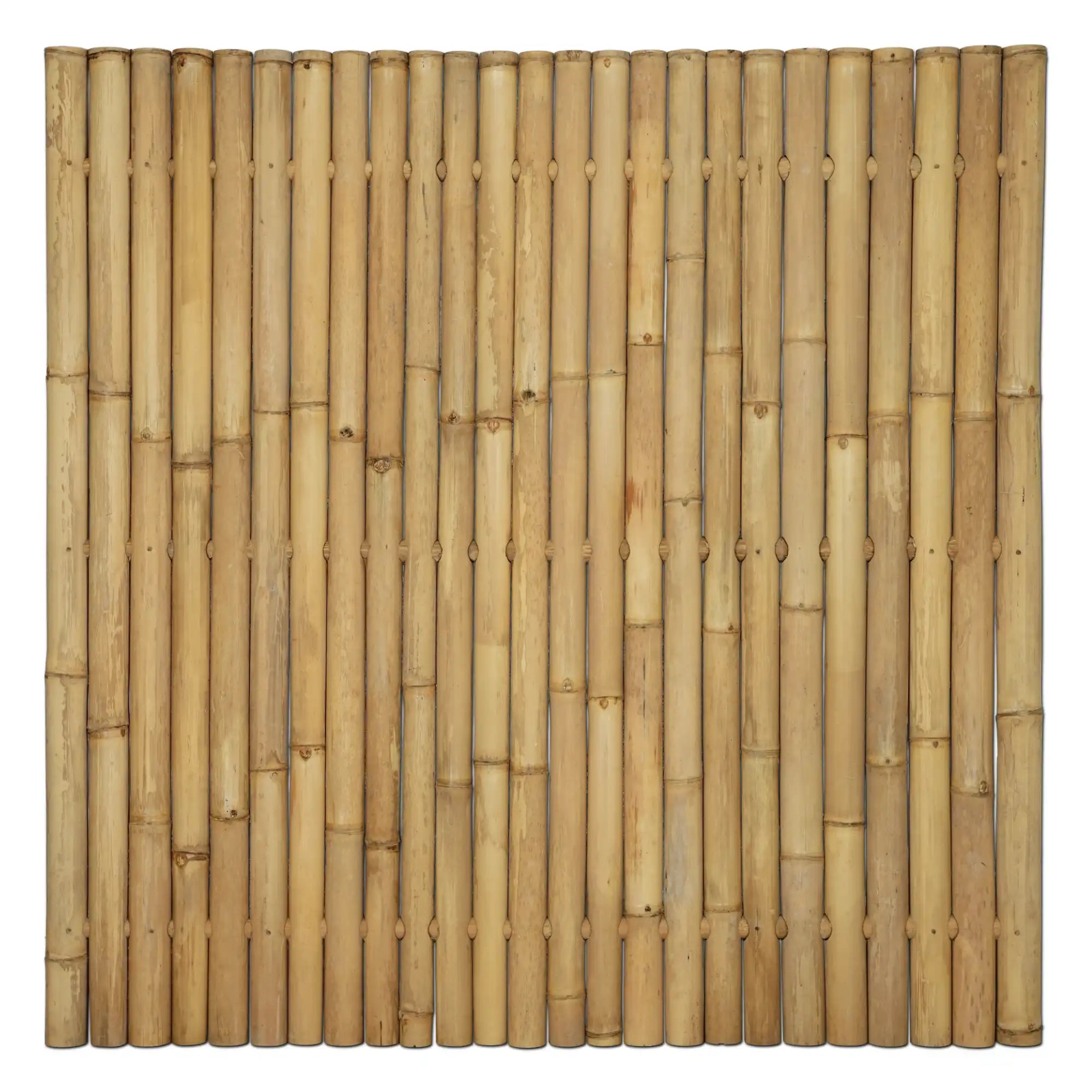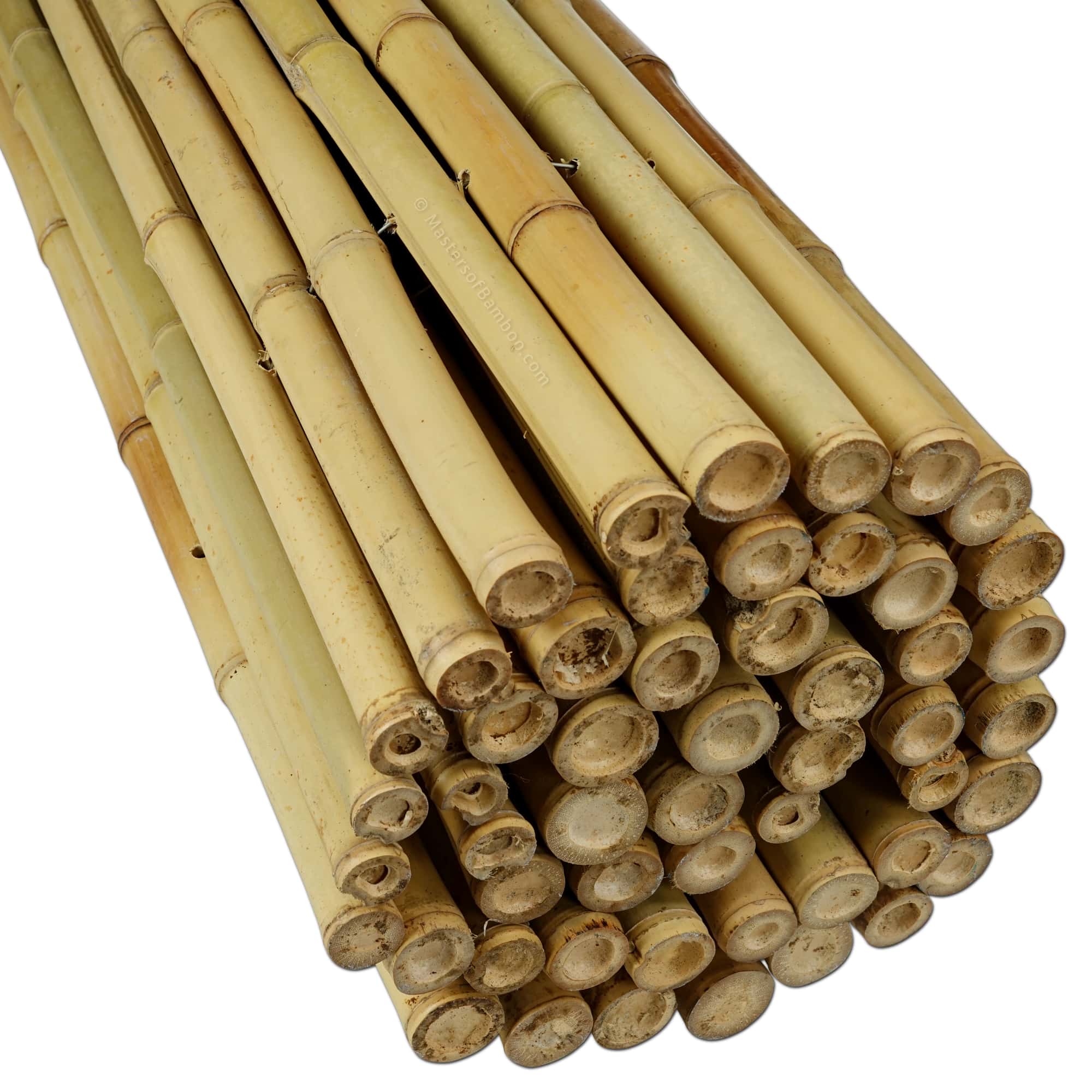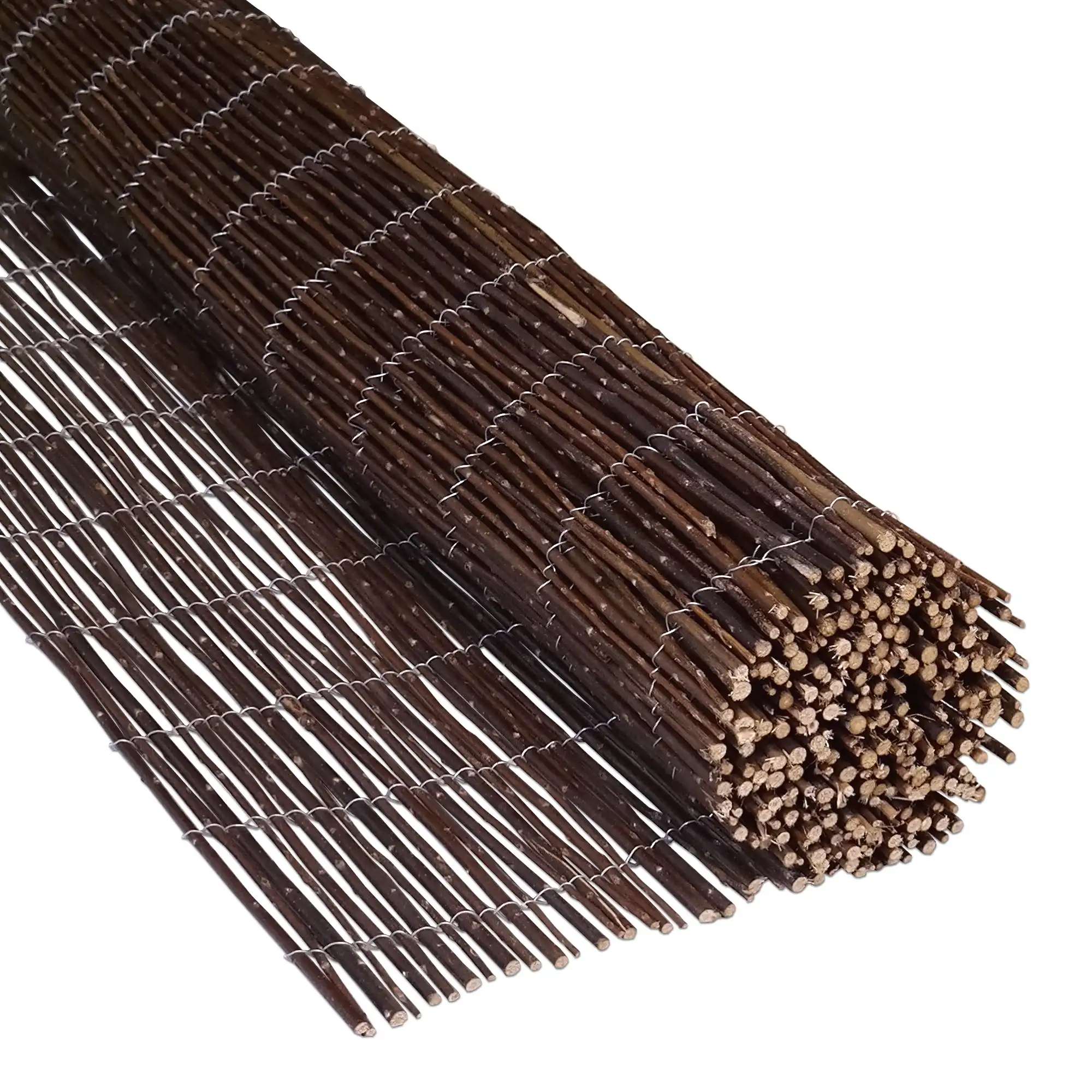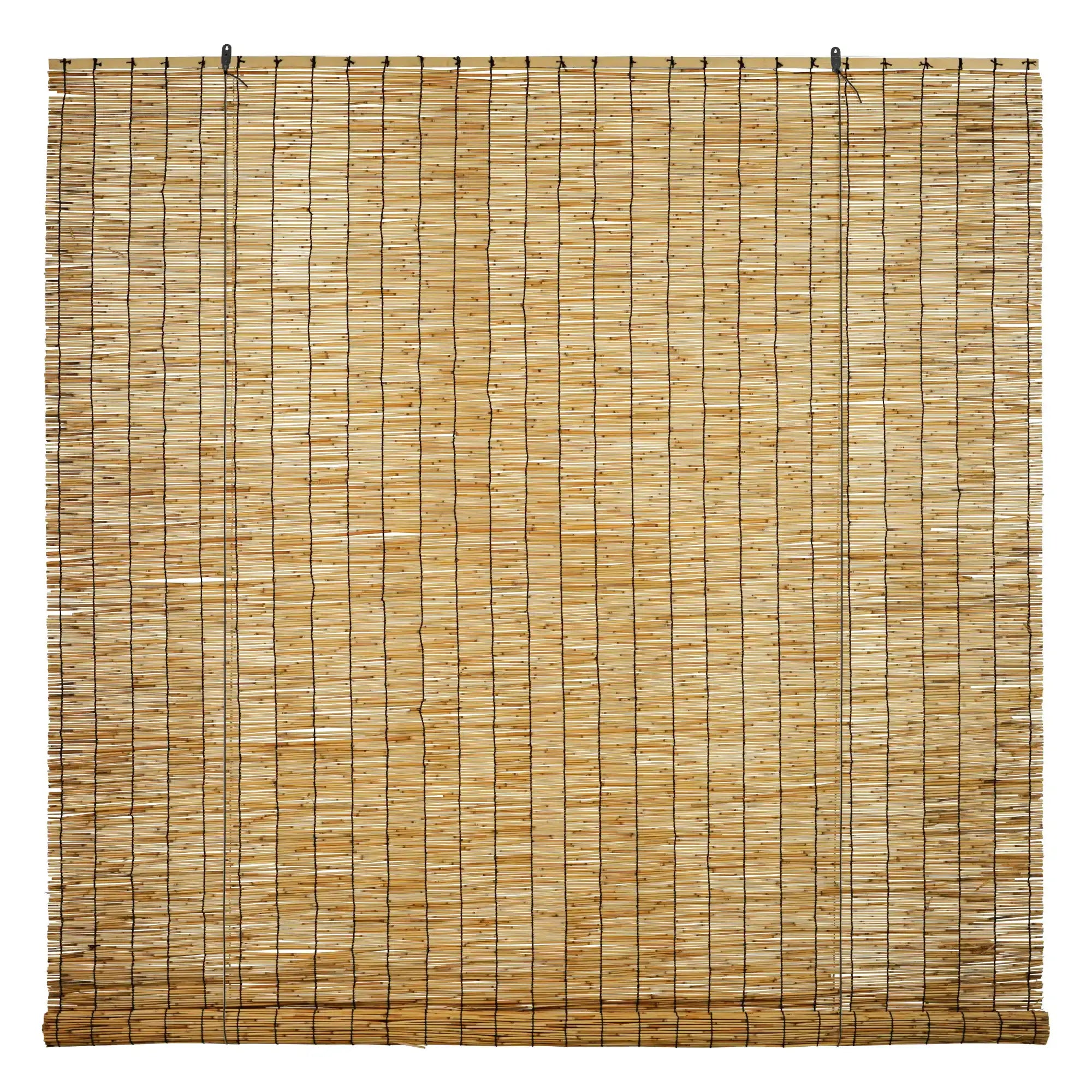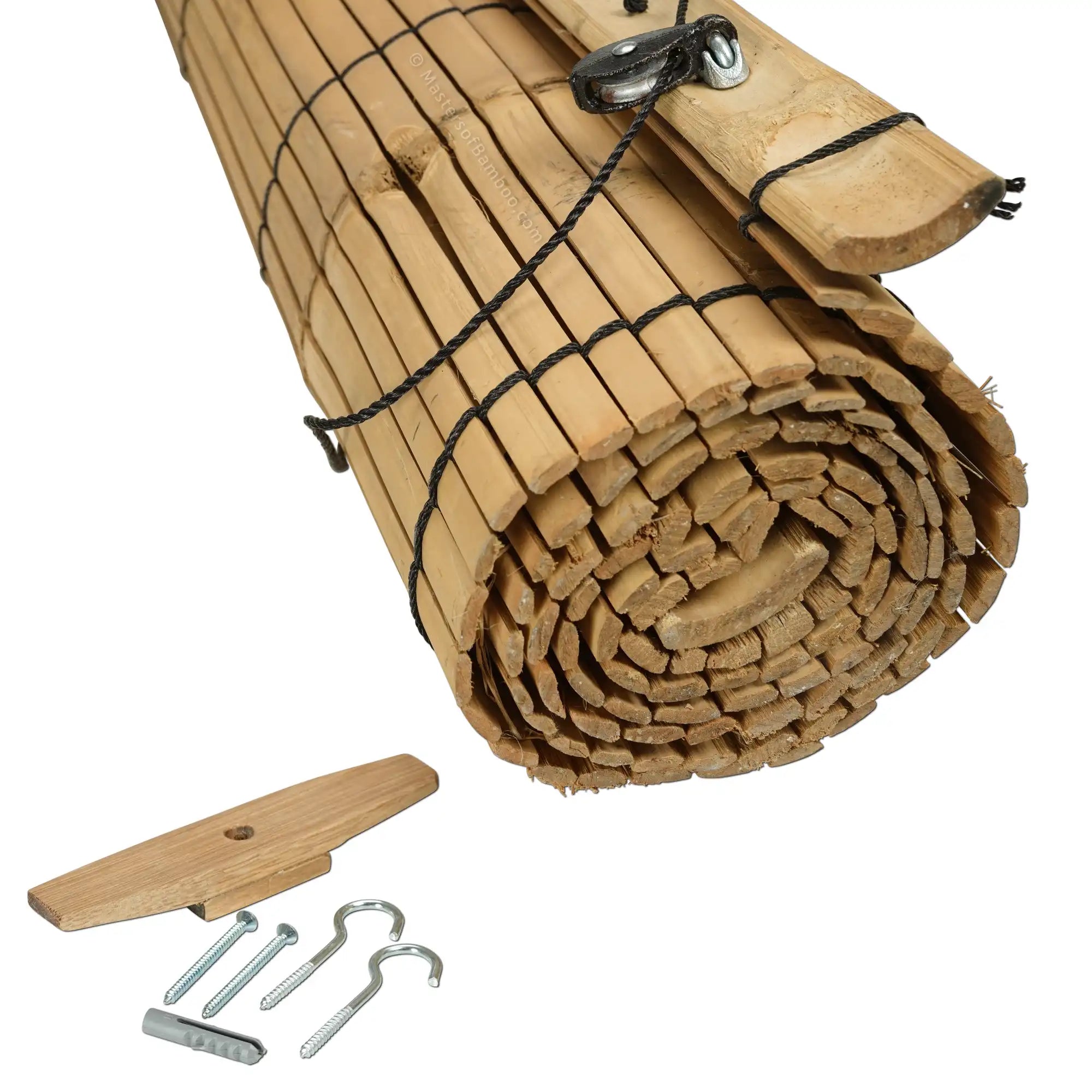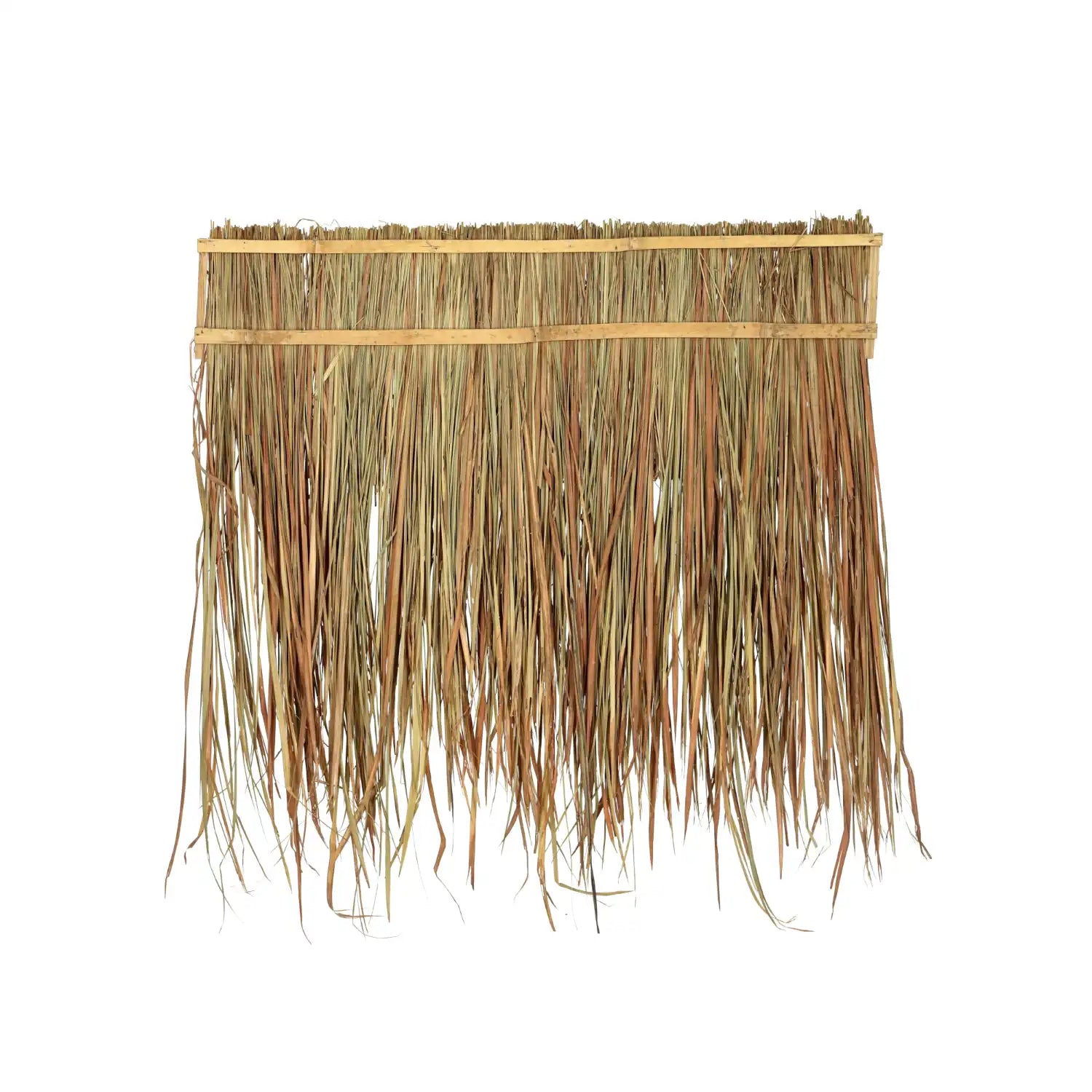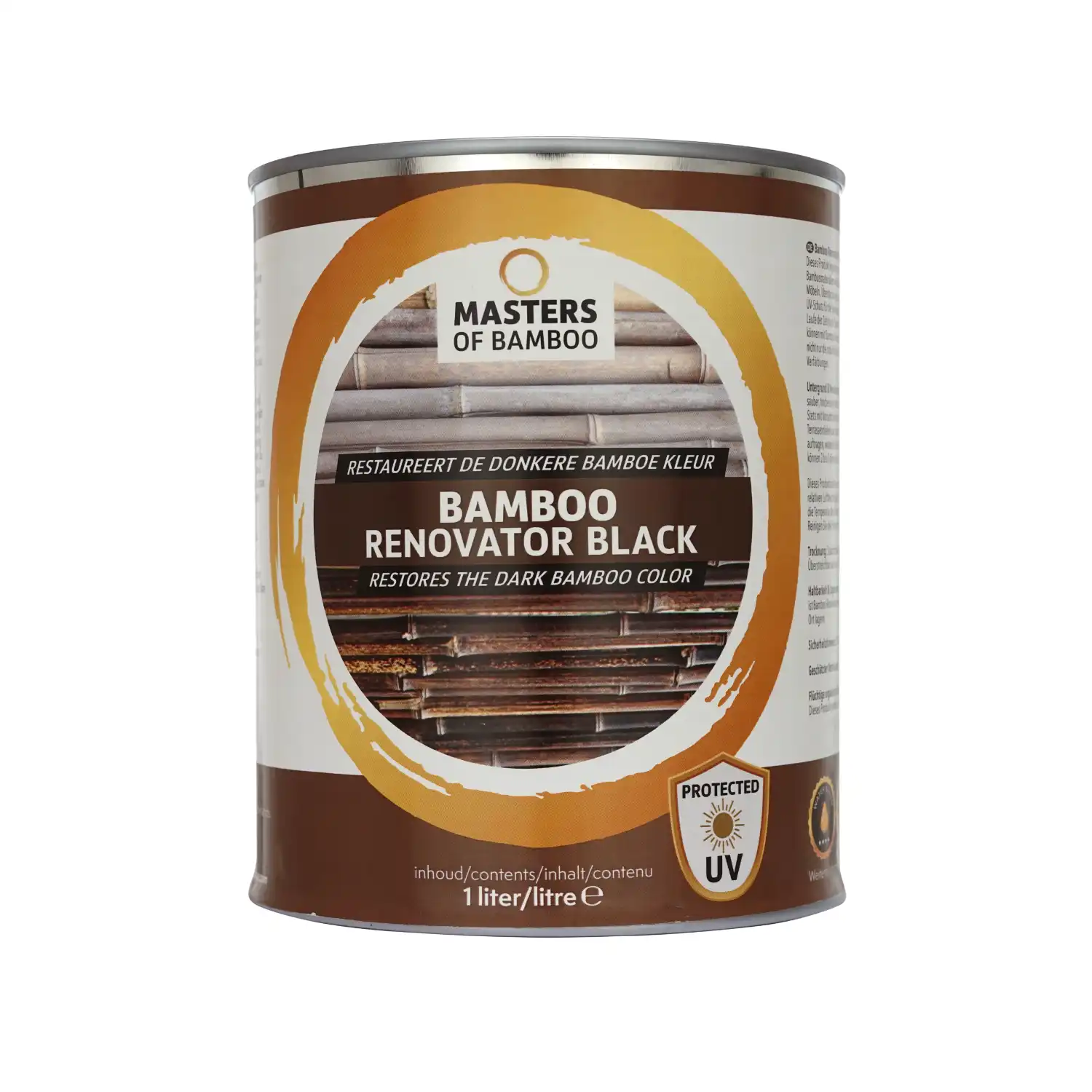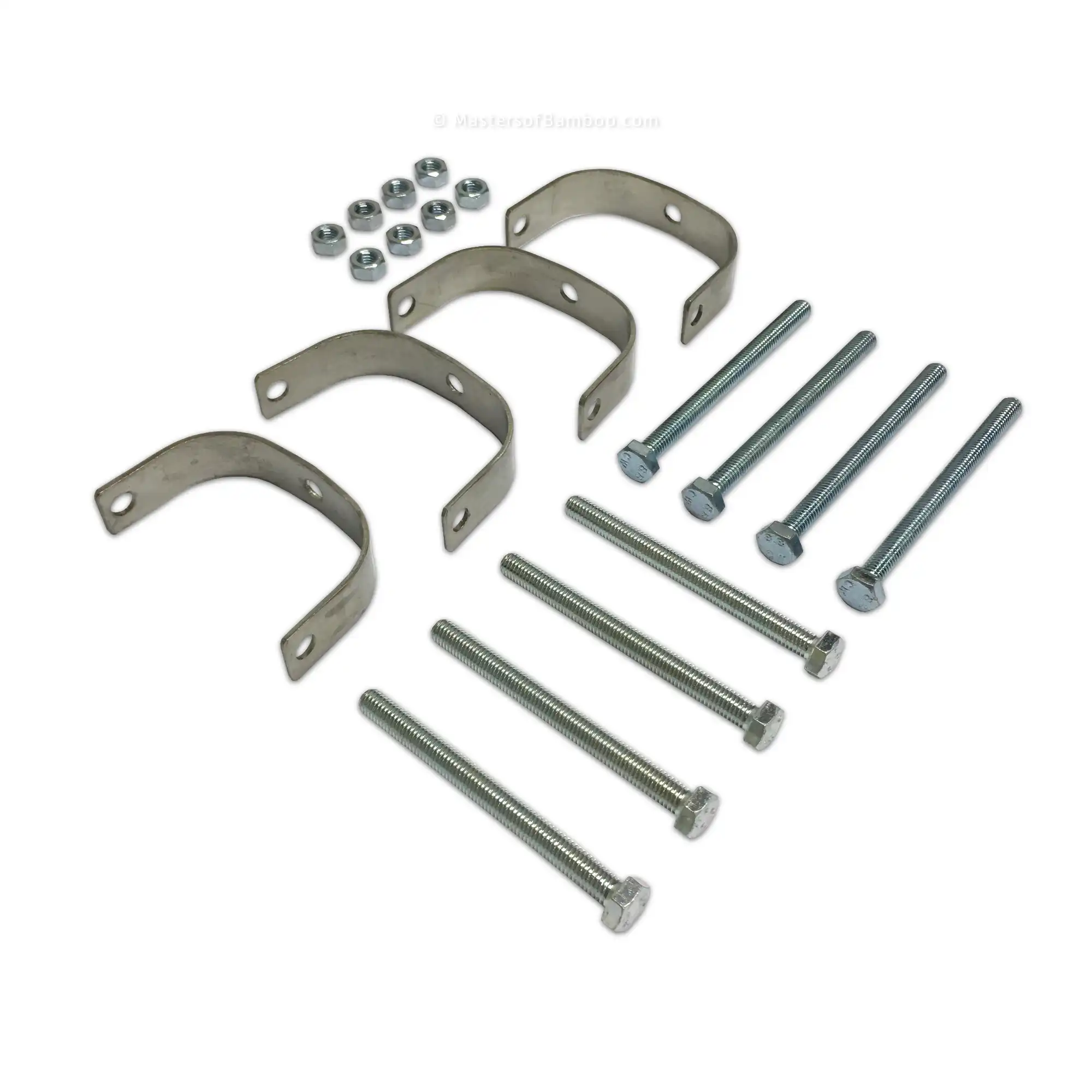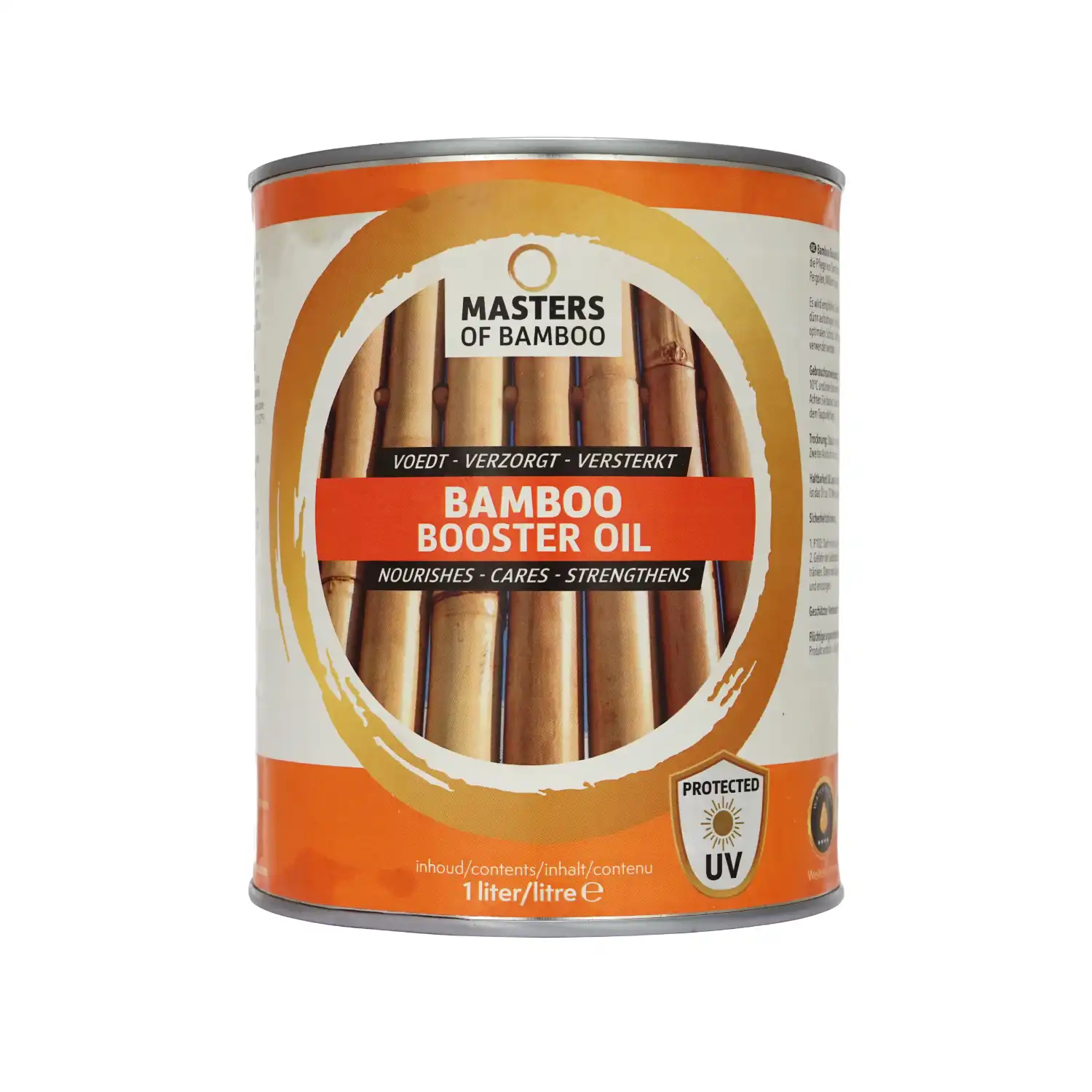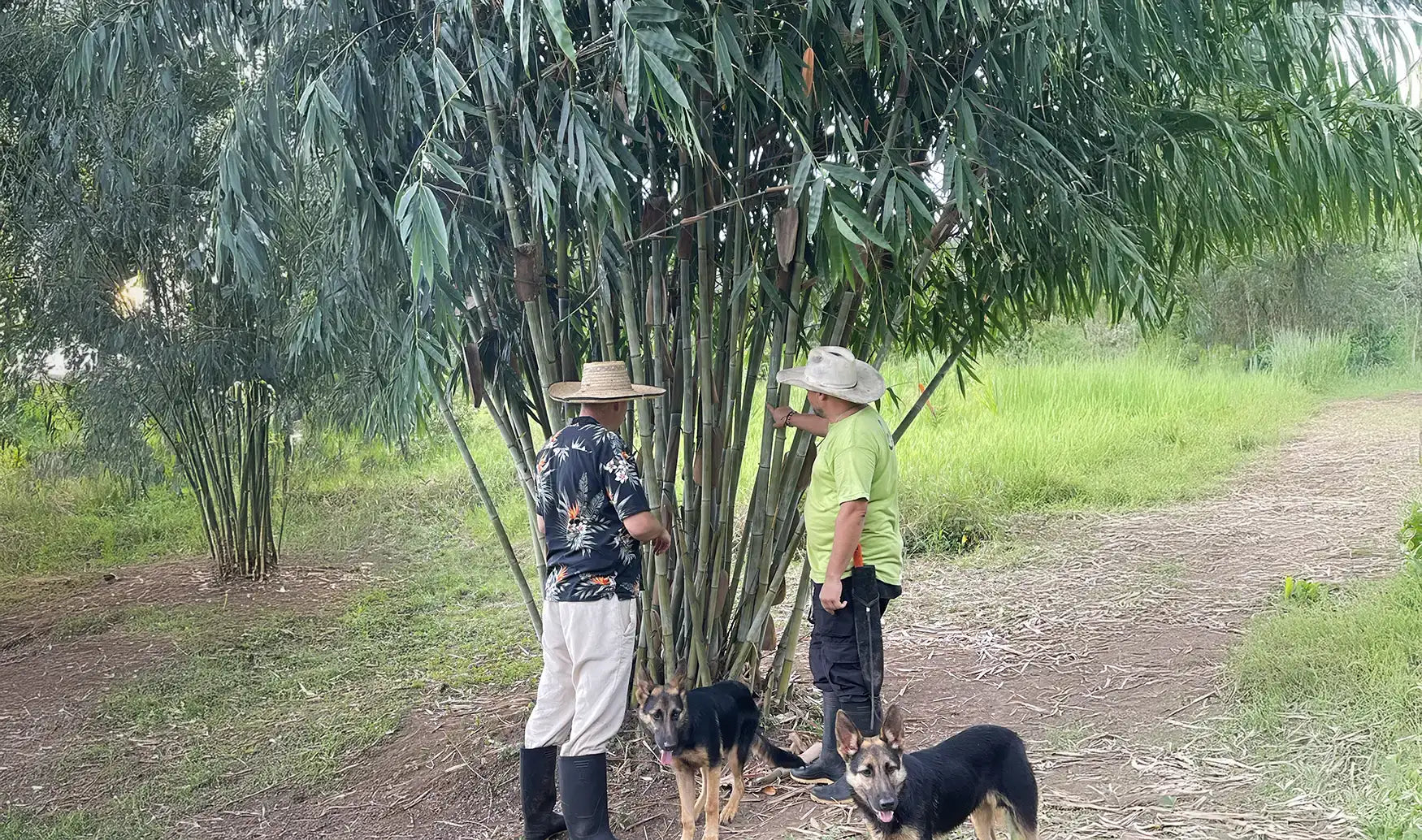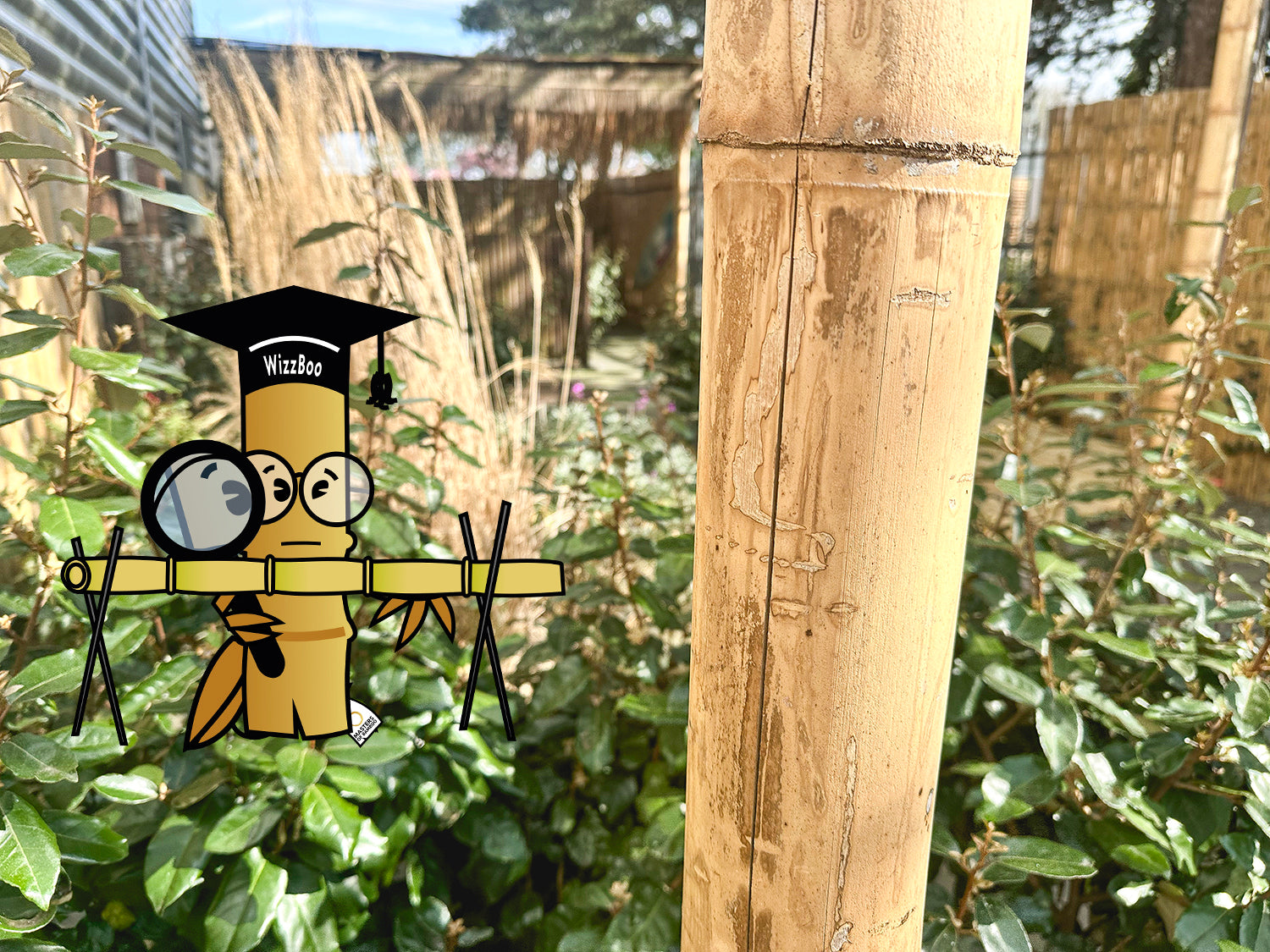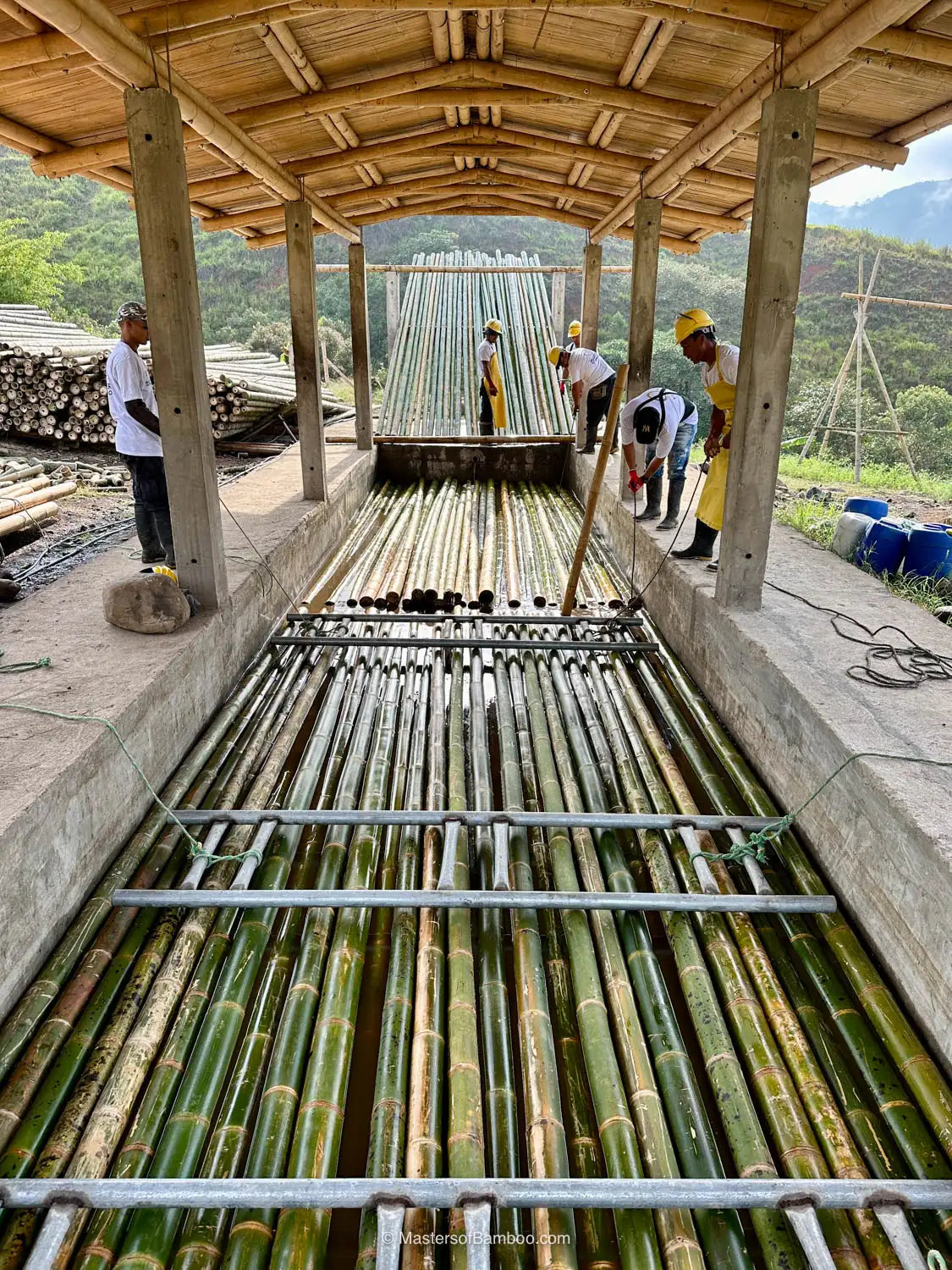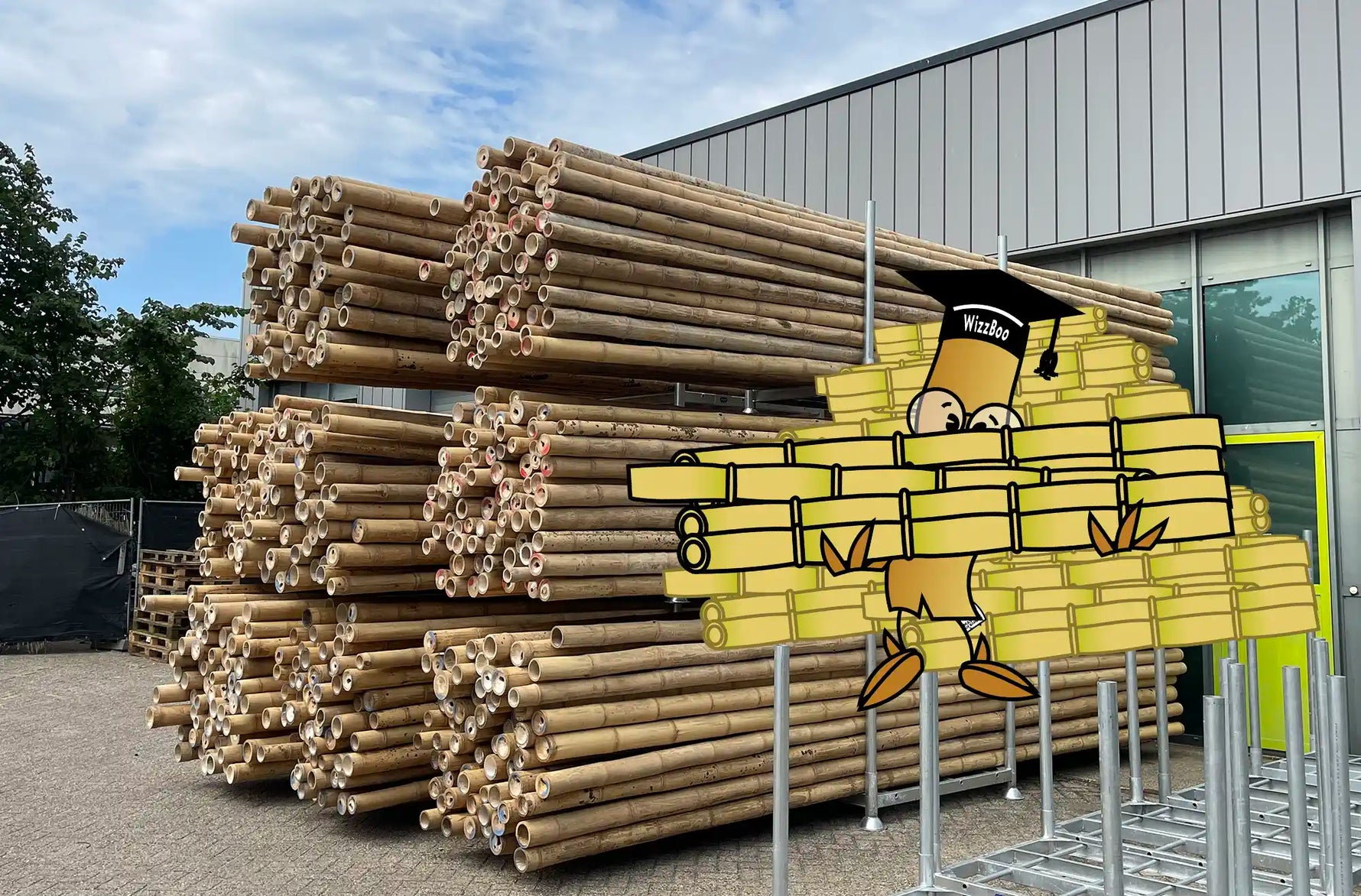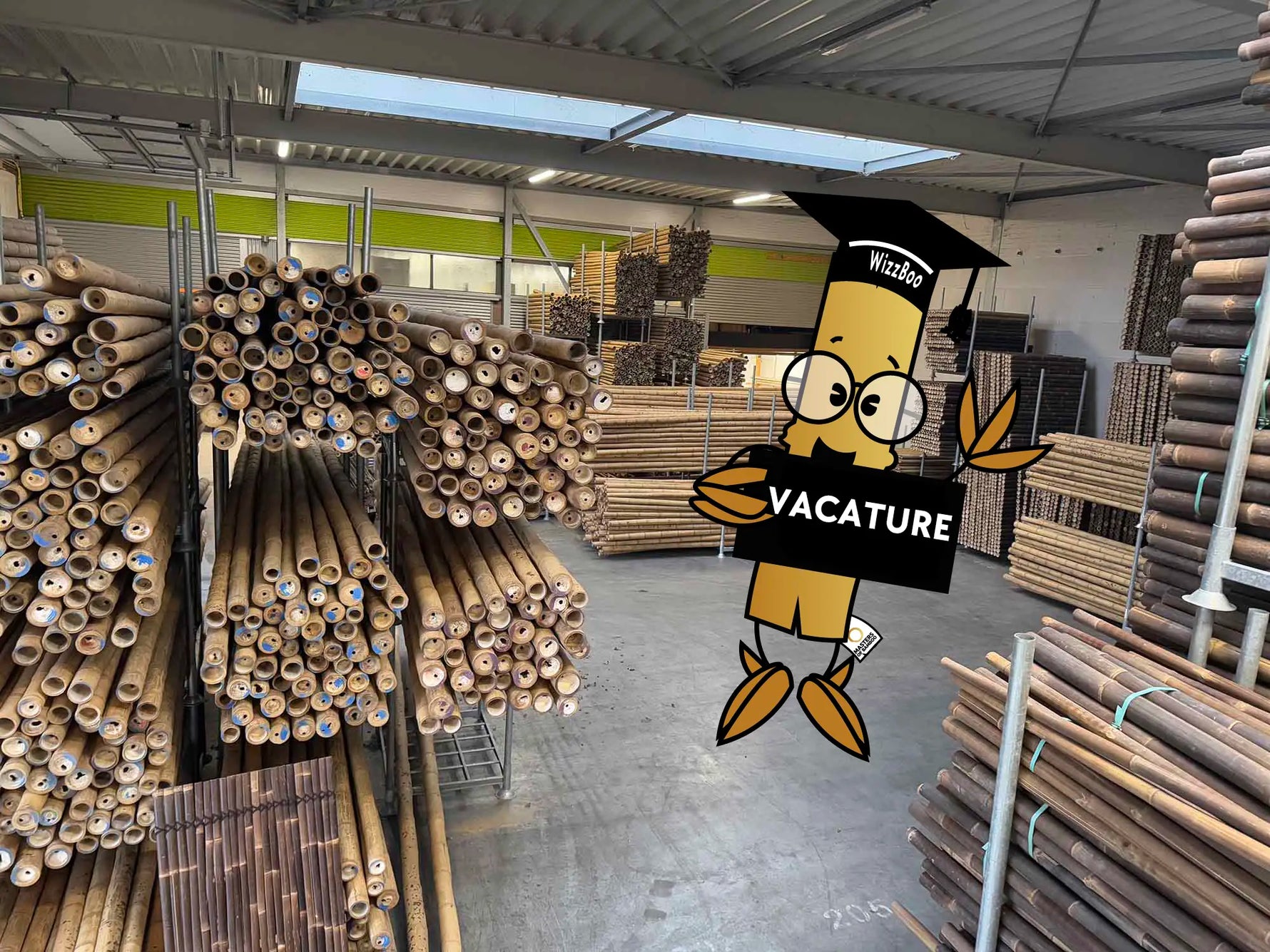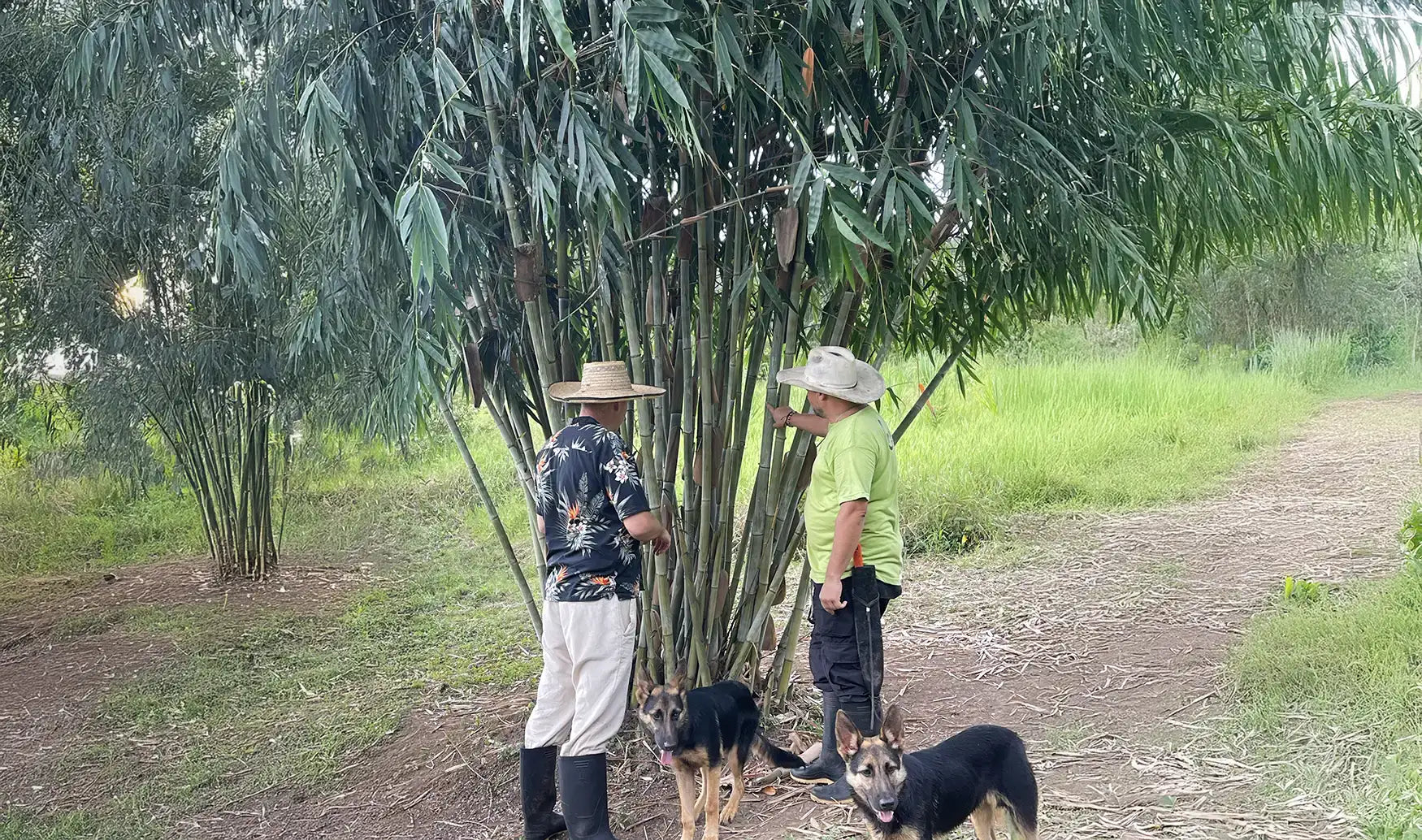
The growth and properties of different types of bamboo
Bamboo is a natural product with unique properties. From lightning-fast growth to impressive strength, bamboo has it all. But what actually determines the thickness, color and shape of bamboo? In this blog we dive into the world of bamboo and explain how growing conditions and species-specific characteristics determine the final appearance and quality of bamboo. This way you know exactly where your bamboo pole comes from and what makes it so special!
What determines the thickness of a bamboo pole?
Growth method and thickness
Bamboo is known for its fast growth and its ability to absorb large amounts of CO₂. There are two main types of bamboo: invasive and non-invasive. In invasive bamboo, also known as running bamboo, an entire bamboo forest can develop from a single underground root system. This network provides new shoots with nutrients, allowing them to grow faster and stronger. In this way, a small bamboo plant can grow into a mature plant with sturdy stems suitable for harvesting in just a few years.
Non-spreading bamboo, also known as clumping bamboo, grows more compactly. Here, one mother plant acts as a base, from which new stems emerge in a dense cluster. In nature, you recognize these species by their compact growth, with the bamboo plants growing close together.
You can also view different types of bamboo root systems in this technical drawing .
The way bamboo grows largely determines its final thickness. Unlike trees, which grow thicker over the years, bamboo retains its maximum diameter from the moment the shoot emerges from the ground. Some species reach a diameter of only 3.5 cm, while others can grow up to 18 cm in diameter.
In addition, bamboo has a tapered shape: the diameter gradually becomes narrower towards the top. With short poles (up to 2 meters) this is hardly visible, but with longer poles the difference becomes clearer. The extent of the narrowing varies per species. For example, Guadua has an average taper of 10%. Moso bamboo can become up to 20-30% narrower towards the top. This taper depends on the position of the pole in the plant.
Height and location of the post
Moso bamboo, for example, can grow up to 28 metres high. When 3-metre poles are sawn from this, they can come from the base of the plant or from the top. This affects both the thickness and the degree of tapering. The aim is of course always to keep the taper as small as possible. In this way, parts with too much taper can be used for other purposes.
To recognize which part of the plant a pole comes from, you can look at the distance between the nodes (the thickenings on the stem). At the bottom of the bamboo, the nodes are closer together, while higher up in the plant they are further apart. This is because the internode distances increase during growth. The nodes provide sturdiness and contribute to the strength of the bamboo.
The distance between the nodes is determined by the species, but also by the growing conditions. More moisture can lead to larger internodes, for example. Some poles also naturally have longer internodes than others.
By looking at the thickness, taper, and spacing of the nodes, you can estimate where a bamboo pole has been in the plant. Poles with less tapering and short internodes often come from the lower part of the bamboo, while narrower poles with longer internodes usually come from the top.
What determines the color of bamboo?
Bamboo is available in various colours, this is determined by the type. For example, we sell 'black' bamboo, which naturally has that colour. Our bamboo is therefore not dyed. Below we describe the best types of bamboo for construction use.

The posts are shown here in the order of the text.
Moso bamboo
Moso bamboo is a versatile species that is used for various applications. The young shoots are edible and the poles have a characteristic yellow color with a waxy protective layer. This layer functions as a mild, natural Bamboo Protector. Moso bamboo is often processed into sheet material. During this process, the natural sugars in the bamboo caramelize, giving the sheet material a warm caramel color. Moso bamboo is used in our Large bamboo mat.
Sometimes Moso poles do not grow completely straight. They can be bent straight by heating, which can cause slight discolouration. In addition, some Moso poles can have a green tint that naturally turns yellow in the sun.
Guadua bamboo
Guadua bamboo is extremely strong and has a thick wall and comes from Colombia. The natural beige color can sometimes show a bit grayish. The trunk has a matte finish and an open texture. Guadua bamboo is known as the strongest type and is often used for construction applications, such as our pergolas : Bogota and Calima , and festivals like Mysteryland. You can read more about the process of a guadua pole in this blog.
Java black bamboo
This bamboo comes from the Indonesian island of Java and has a deep color that is more even than nigra bamboo. The java poles are strong and certainly suitable for construction. That is why we use this type for our black bamboo pergolas. You will also see these posts in our garden screens and bamboo roller blinds.
Tali bamboo
Tali bamboo comes from Indonesia and has a warm, yellow colour. The long internodes and matt finish make it ideal for bamboo screens, such as our Giant fence. Our bamboo roller blinds are also made of Tali bamboo.
Tonkin bamboo
Tonkin bamboo is a thin but strong type of bamboo with a relatively thick wall. This makes it ideal as a support for plants in (vegetable) gardens. The natural beige colour can have a grey-green tint and the outer layer has a subtle shine. Tonkin bamboo is used for our Basic bamboo mat.
Nigra bamboo
This Chinese bamboo species can be recognized by its dark color and prominent nodes. Nigra bamboo has a natural shine, comparable to moso bamboo. The stem can show variations in color, which is enhanced during the drying process. This can give a nigra pole a kind of speckled pattern, which makes each piece unique. Nigra bamboo is used in our Bamboo Mat Large.
How do you maintain bamboo?
Bamboo changes colour over time due to weather influences. Factors such as sunlight and humidity play a major role in this. Some bamboo species naturally have a type of waxy layer, on which treatment with Bamboo Protector is not recommended. In that case, a Bamboo Booster is a better choice. Most bamboo species can be treated directly with Bamboo Protector. Are you unsure about the right treatment? Contact us for advice.
To maintain the color of bamboo, we recommend treating your products annually. Our Bamboo Renovator Natural and Bamboo Renovator Black offer UV protection and have a pigment that matches the natural shade of bamboo. This allows you to bring greyed bamboo back to its colour.
Share
